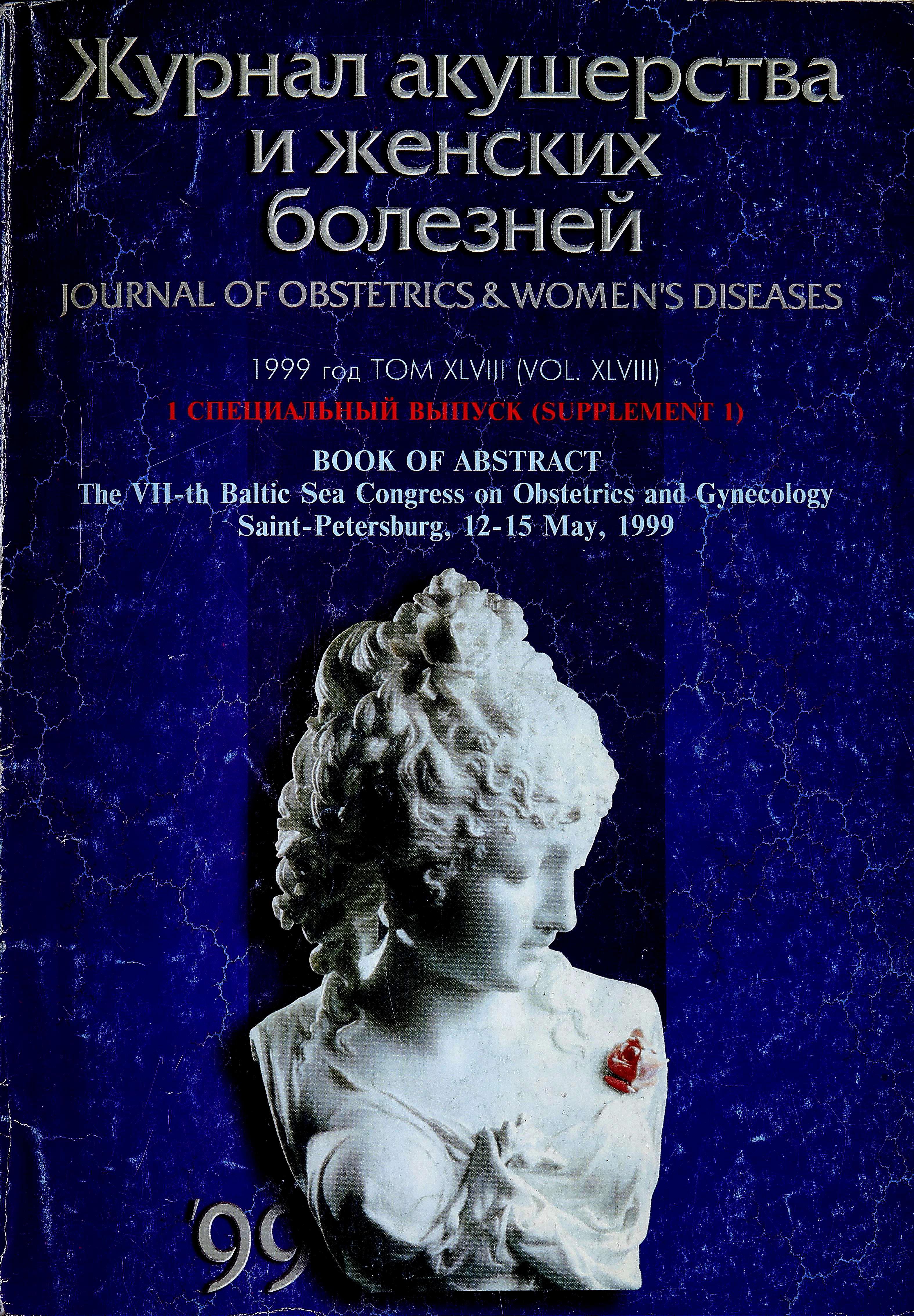Sperm morphology as a reliable method of male fertility evaluation
- Authors: Leontjeva O.A.1, Vorobjeva O.A.1
-
Affiliations:
- D.O. Ott Institute of Obstetrics and Gynecology, Russian Academy of Medical Sciences
- Issue: Vol 48, No 5S (1999)
- Pages: 98-98
- Section: Articles
- Submitted: 17.02.2022
- Accepted: 17.02.2022
- Published: 15.12.1999
- URL: https://journals.eco-vector.com/jowd/article/view/101050
- DOI: https://doi.org/10.17816/JOWD101050
- ID: 101050
Cite item
Full Text
Abstract
Objective: The aim of this study was to investigate accuracy of sperm morphology and correlation with IVF rate.
Full Text
Objective: The aim of this study was to investigate accuracy of sperm morphology and correlation with IVF rate.
Methods: Accuracy of sperm morphology assessed according to Krugerys strict criteria in our modifications was evaluated by duplicate investigation of 50 samples. The data were analyzed by r and td. To evaluate stability of sperm morphology the data from 145 observations in 59 patients over 1,5 years were processed by AN OVA. Correlation of sperm morphology with the age of man was investigated by r (n=242). The effect of Percoll/swim-up semen separation on sperm morphology was assessed by td and by multiple regression analysis (n=57). To investigate the influence of sperm morphology on the IVF rate comparison of two patient groups with IVF rate less than 33% (n =29) or more than 66% (n=178) was performed by means of discriminant analysis and results of 160 IVF cycles were subjected to the regression analysis.
Results: It was shown that the results of sperm morphology analysis are accurate (for percent of normal spermatozoa (NS) r2=0,98 P<0,0001; td=1,8 P=0,1; for slightly abnormal sperm (SAS)- r2=0,83 P<0,0001; td=1,2 P=0,2), stable over time (for NS F=0,18 P=0,9; for SAS F=1,0 P=0,4) and not affected by the age of man. It was found that the percentage of NS and SAS significantly increase after the use of Percoll/swim-up preparation technique (P<0,0001). The percentage of NS after Percoll/swim-up separation directly correlated with NS in semen (R2=0,78 P<0,0001) and does not depend on sperm motility, on total concentration and concentration of motile spermatozoa in the original sample. It was shown that TVF rate increased with the increase of NS (R2=0,04 P<0,01) and NS+SAS (R2=0,05 P<0,008). Among the combination of factors influenced on IVF rate the percent of NS was the most significant (for NS F=15,5; P<0,0003; for sperm motility F=7,1 P=0,008; for motility grade F=7,0 P=0,008; for SAS F=3,9 P=0,046).
Conclusion: Our modification of sperm morphology assessment is reliable method important in predicting IVF rate, man age (for NS P=0,3; for SAS P=0,9) To evaluate stability of sperm morphology its analysis was performed two time in 39 patients, three time - in 13 and four time in 7patients with interval from 2 weeks to 1,5 years. The data were processed by ANOVA to investigate the influence of sperm morphology on the IVF rate the results of 160 IVF cycles with 6 and more oocytes retrieved were studied and the data were processed by the regression analysis. To reveal the combination of parameters influenced on in vitro fertilization comparison of two patients groups with IVF rate less than 33% (n=29) or more than 66% (n= 178) was performed by the use of discriminant analysis.
About the authors
O. A. Leontjeva
D.O. Ott Institute of Obstetrics and Gynecology, Russian Academy of Medical Sciences
Author for correspondence.
Email: info@eco-vector.com
Russian Federation, St. Petersburg
O. A. Vorobjeva
D.O. Ott Institute of Obstetrics and Gynecology, Russian Academy of Medical Sciences
Email: info@eco-vector.com
Russian Federation, St. Petersburg
References
Supplementary files







